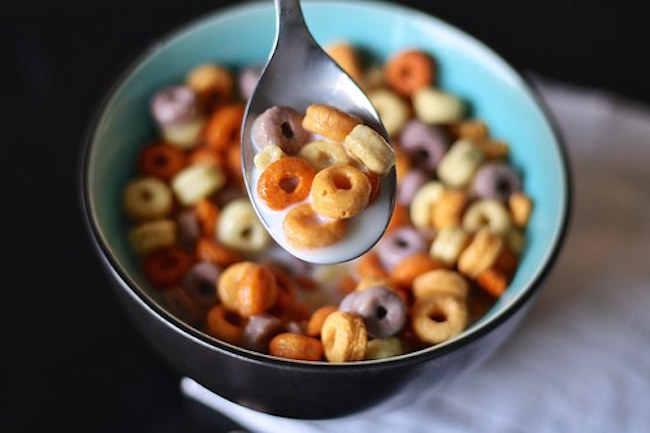Harmful Ingredients In “Healthy” Breakfast Cereals By Iris Meyers for Natural Blaze
Many breakfast cereals claim to be a healthy way to start the day. Their boxes feature cute, colorful characters and catchy slogans that attract children, and their promise of a “complete” breakfast with whole grains, fiber and vitamins captures adults’ attention.
Cereal can be part of a balanced and nutritious breakfast. But many contain excess sugar, potentially harmful additives like food dye and added micronutrients that actually undermine their nutritional value.
Sugars and added vitamins
Breakfast cereals, especially those marketed to children, often contain large amounts of sugar. An EWG study found that children’s cereal has, on average, over 40 percent more sugar than cereal marketed to adults. A single serving of the most sugary products can exceed 60 percent of the maximum daily amount recommended by health authorities.
Many breakfast cereals also have excess added vitamins and minerals. Added micronutrients like vitamin A, zinc and niacin in a cereal might be a draw. But too much of a good thing can be harmful: A 2014 study shows nearly half of all children ages 2 to 8 consume more than the “tolerable upper intake levels” for vitamin A, zinc and niacin. Overconsumption can lead to health problems like brittle nails, hair loss, anemia and suppressed immune function.
Food additives
Many popular breakfast cereals contain potentially harmful food additives like butylated hydroxyanisole, or BHA, and butylated hydroxytoluene, or BHT.
BHA and BHT are added to well-known brands such as Cap’n Crunch, Apple Jacks, and Froot Loops to prolong their shelf life. The additives have been shown to cause hormone disruption, harm the reproductive system and potentially increase risk of cancer.
These additives continue to be allowed in the food we eat because of the Food and Drug Administration’s outdated generally recognized as safe, or GRAS, rule loophole. The purpose of the GRAS rule was to allow ingredients to skip regulatory approval only if they’re known to be safe. But it’s allowed manufacturers, not the FDA, to certify their own ingredients as safe.




